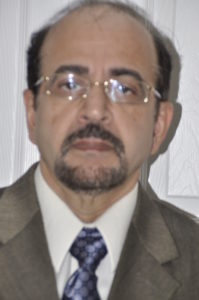Medisko is the web site of Arup Ghose Consulting LLC, a computational chemistry, cheminformatics and bioinformatics support company for the life saving medicine discovery. It was established in 2012. As a computational chemistry support company, we are ready to accept any challenging projects for medicine discovery since we have extensive development skills for new technologies. We have extensive experience in protein sequence and structure alignment and converting protein structural data to the knowledge of ligand binding which helps medicinal chemists to design better ligands for further computational analysis. Therapeutic area based physicochemical property analysis was introduced by us. Our atom based physicochemical properties were the basis of many 3D and 2D QSAR’s. We extensively used pharmacophore modeling and maximum common substructures for enriching the proprietary compound collection.
Arup K. Ghose

Arup Ghose started his scientific career from Jadavpur University in Calcutta (now Kolkata). He did his PhD in medicinal and computational medicinal chemistry, then he joined Prof. Gordon Crippen, initially at Texas A&M University and finally at the University of Michigan to carry on his post-doctoral work. He has more than 25 years’ experience in the industry as an application scientist where he applied various computational techniques to drug discovery. He worked in three projects that led to three approved drugs (ribavirin, cinacalcet and neulasta). Five other projects delivered clinical candidates.
However, the most remarkable aspect of Ghose’s career was his contributions in developing various computational methods for drug discovery. Water-octanol partition coefficient of an organic molecule determines the probability that the molecule can penetrate the cell membrane to reach the intracellular target proteins. Ghose’s AlogP is one of the most widely used methods for computing this important property. Ghose and Crippen were the first to develop a 3D-QSAR method and used that terminology. Profiling drug-like molecules, differentiating CNS drugs from non-CNS, protein structure alignment to formulate the protein structure-based design strategy, all these technologies were touched by his intellect. Many articles that he wrote were among the most cited articles for that particular journal. According to the Stanford University compilation of most cited scientists (https://doi.org/10.1371/journal.pbio.3000918), he belongs to the top 2% most cited scientists in the world.
Chandralekha Ghose

Chandra did her high schooling from Calcutta’s famous Holy Child Institute. She graduated with Hons. in Chemistry from the most prestigious College in Calcutta (Presidency College). She completed her MS in chemistry from Texas A&M University with 4.0 GPA. She worked in the University of Michigan, Nucleic Acid Research Institute as a scientist and AG Consulting for business development.